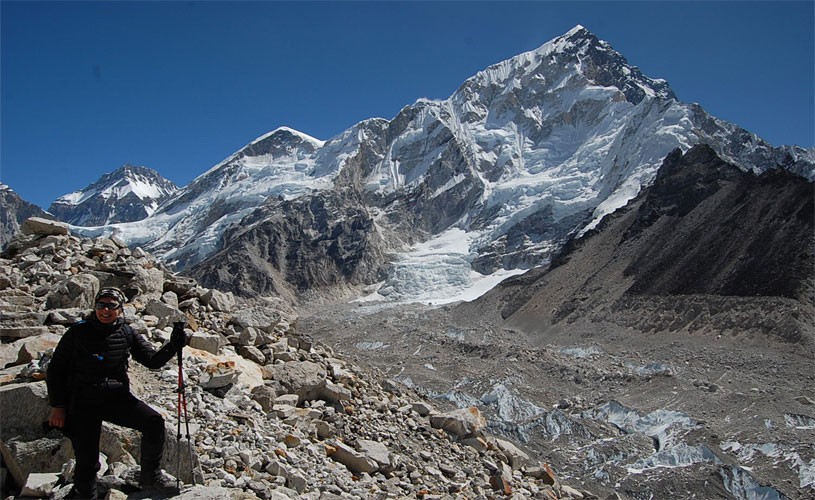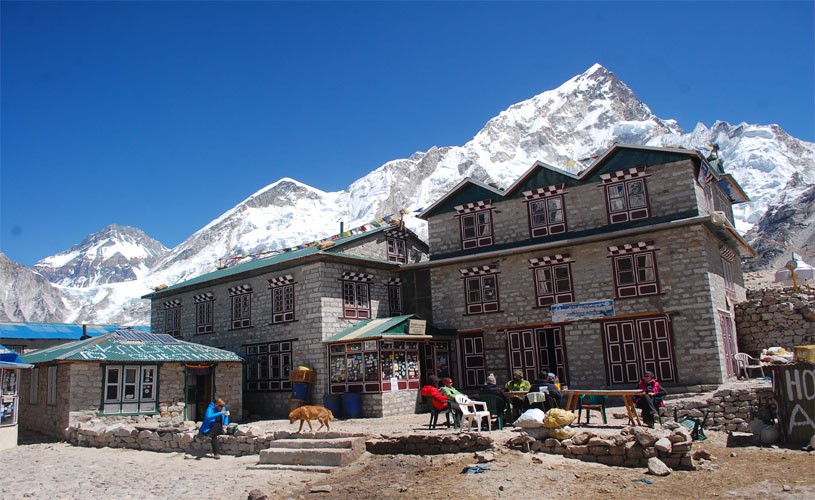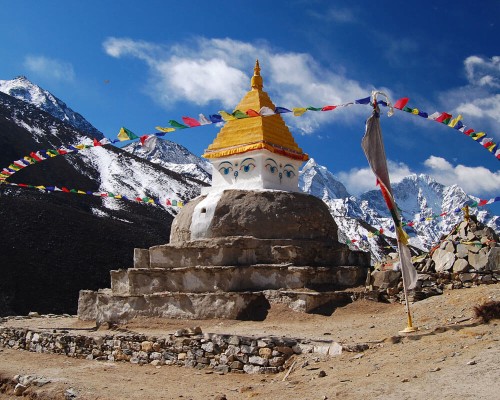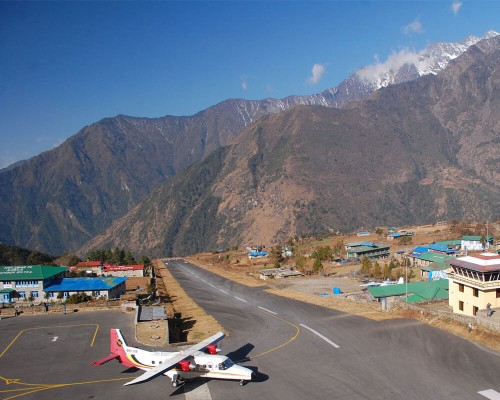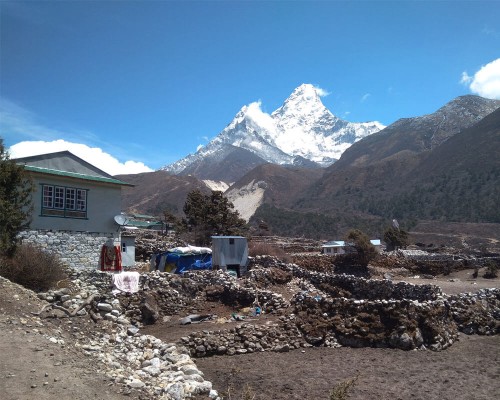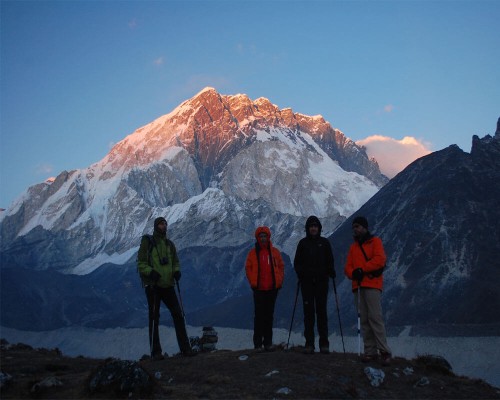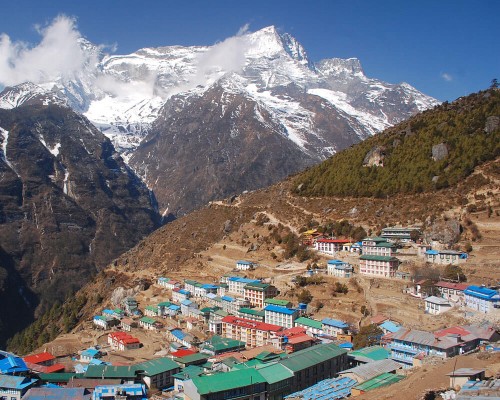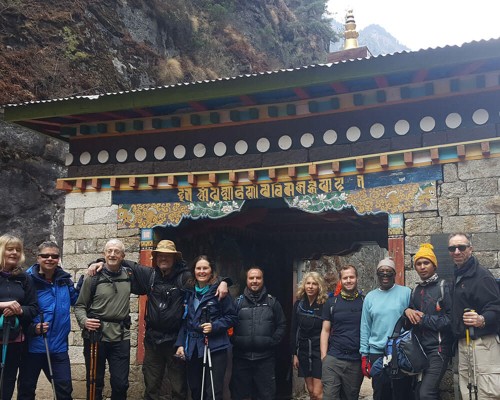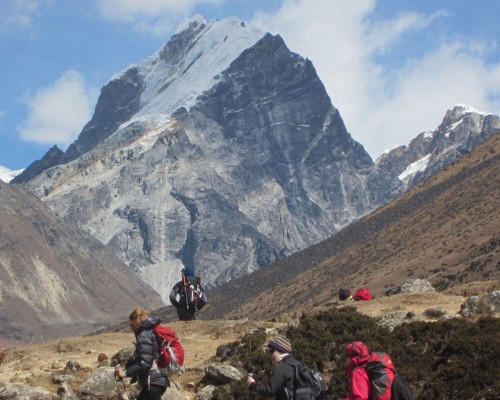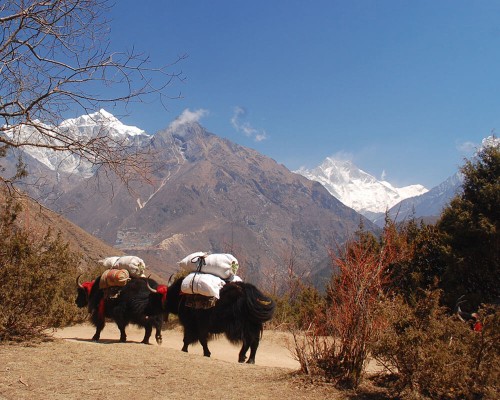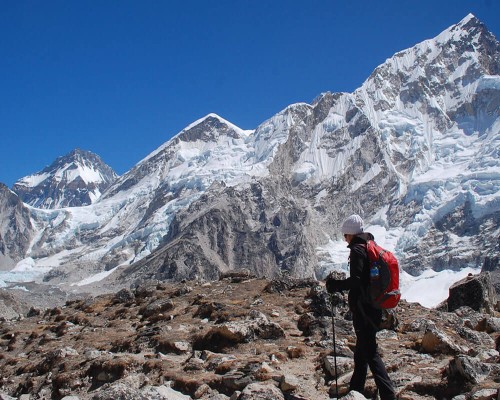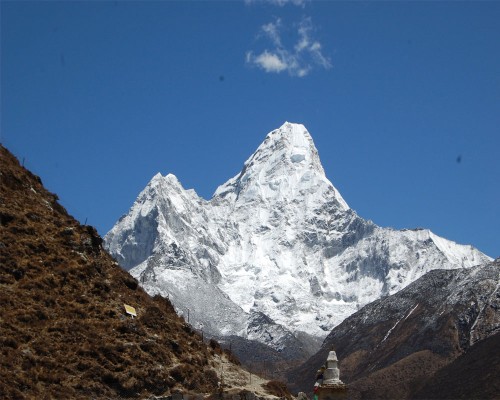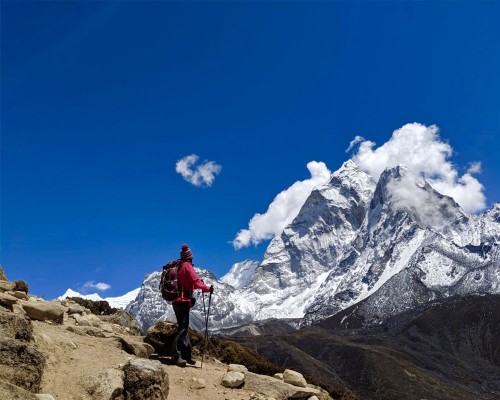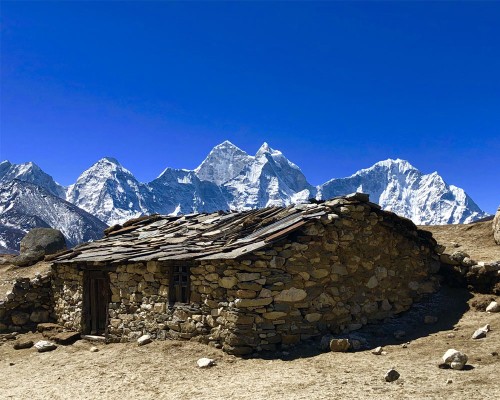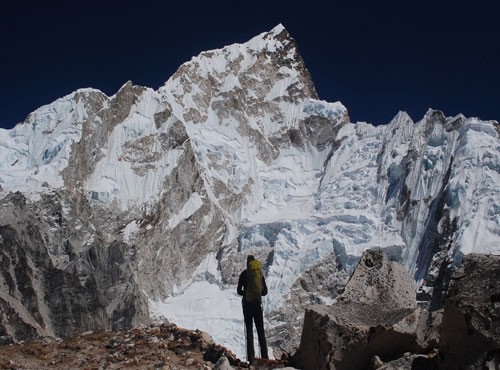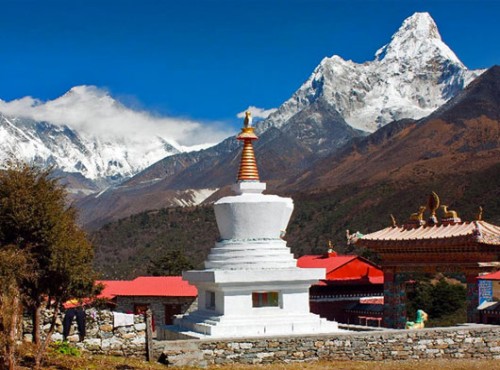Everest Base Camp Trek 16-Day Highlights:
- Visit UNESCO World Heritage Sites in the Kathmandu Valley.
- Begin with an exhilarating flight to Lukla, offering breathtaking mountain views.
- Explore Sherpa villages and immerse yourself in their rich culture.
- Cross thrilling suspension bridges over rushing rivers.
- Rest and acclimatize at the vibrant Namche Bazaar.
- Enjoy panoramic views during a hike to the Everest View Hotel.
- Visit the serene Tengboche Monastery, framed by majestic peaks.
- Reach Gorak Shep, the gateway to Everest Base Camp.
- Witness the awe-inspiring Khumbu Icefall up close.
- Ascend Kala Patthar for a magical sunrise over Mount Everest.
- Conclude with a flight to Kathmandu.
Everest Base Camp Trek 16 Days Package Cost 2025/2026
Looking for the ultimate Himalayan adventure in 2025/2026? The Everest Base Camp (EBC) Trek (16 days) takes you deep into the heart of the Khumbu region, where the trail winds past ancient Sherpa villages and towering peaks like Lhotse, Ama Dablam, and Makalu, and leads you to the iconic Everest Base Camp (5,364 m).
This once-in-a-lifetime adventure combines stunning mountain views, rich cultural encounters, and the incredible feeling of standing at the foot of the world’s tallest peak—Mount Everest (8,848 m). You’ll walk beneath blooming rhododendron forests in spring, cross suspension bridges, and visit traditional Sherpa villages.
Your journey begins with a scenic flight from Kathmandu to Lukla, often ranked among the most adventurous airstrips in the world. From there, the trail leads through Namche Bazaar (3,440 m)—a vibrant Sherpa town and your first acclimatization stop—filled with lodges, bakeries, gear shops, and cultural landmarks.
At an elevation of 5,550 meters (18,600 feet), the Everest Base Camp trek difficulty is moderate to challenging, attracting trekkers from across the globe every year. Our 16-day guided trek includes two key acclimatization days to reduce the risk of altitude sickness and help your body adapt to high elevations.
Except for the mountain views, the Everest region offers a unique cultural immersion. You’ll experience warm Sherpa hospitality, observe their daily way of life, and take part in spiritual traditions such as morning chants and monastery rituals. morning chants and incense-filled monasteries.
The trail follows the Dudh Koshi River, winding past suspension bridges, yak caravans, and colorful prayer flags fluttering beneath the snowcapped peaks. With over 40,000 trekkers visiting Everest Base Camp annually, this remains Nepal’s most popular trek.
Whether you're seeking a classic lodge-to-lodge trek or something more remote, this route balances comfort and challenge. If you have extra time or want to avoid the crowds, consider alternatives like the Gokyo Valley trek, Khumbu Icefall side trips, or Island Peak climbing.
The Everest Base Camp trek cost in 2025 depends on your choice between a guided or solo trek. Guided packages typically range from $1,299 to $1,689, covering permits, flights, accommodation, and meals. While solo trekking may seem cheaper, hidden expenses and the lack of support can add risk and inconvenience.
Choosing the best time to do this trek is essential for a safe and scenic experience. Spring (March to May) and autumn (September to November) offer the clearest skies and most stable weather conditions.
If you're looking for a shorter option that covers the same route and completes your Everest adventure in less than two weeks, and if you've already done a trek above 5,000 meters, you might prefer our Everest Base Camp Short Trek—12 Days
To avoid retracing the same trail back to Lukla from Gorakshep, you can choose our Everest Base Camp Trek with Helicopter Return—11 Days for a more time-saving option with a direct helicopter flight to Kathmandu from Gorakshep."
To book your trip:
Booking a shared or a private 16-day Everest Base Camp Trek is simple. Just let us know your preferred date and share your details to confirm your booking. We can help you choose the right time for your trip. You can reach out to us via email or phone through social media, as mentioned below.
For 24/7 direct assistance, call Mr. Birendra at +977-9851025658 (WhatsApp and Viber).
You can also contact us via email at [email protected].
For instant booking, click the Book Now
Alternatively, visit our Contact Us page (click here).
How difficult is the Everest Base Camp Trek?
The Everest Base Camp Trek is an adventurous journey up to 5,500 m/18,192 ft on the lap of the world's highest mountains. However, you do not have to be an expert in mountaineering to accomplish this trek. The acclimatization period of about two days, set in the initial phase of the tour, will prepare you to adjust to the conditions at a higher altitude. It only requires good mental health and physical health. With the leadership of our experienced guide, who is qualified in first aid, you can complete the trek efficiently. There will always be a guide beside you to make sure you take frequent breaks and drink many fluids as you climb higher on the mountains. Your safety is our main concern. We will take care of all your needs to ensure you are happy with this 16-day Everest Base Camp Trek.
When is the best time for the Everest Base Camp trek?
The best seasons for the Everest Base Camp trek include spring and autumn—specifically, from March to May and September to November. The weather is usually crystal clear, and the Himalayan views can be explored brilliantly. The days are warm, and the nights are cold. In spring, the temperature of Namche Bazaar (3440 meters) will usually be around 3-9 degrees Celsius (37-48°F). In autumn, the temperature will sometimes go below zero at night, but days are fine for walking.
Winter becomes more adventurous to trek to Everest base camp; the temperature might fall below zero even during the day. The usual snowfall is expected up to Lukla. However, trekking in December and January is a great season if you want fewer crowds. Monsoon is considered an off-season trek in the Khumbu region—Everest Base Camp. However, some lower-altitude treks can be done during the monsoon too.
Meals on Everest Base Camp Trek
Breakfast, lunch, and dinner will be provided during the trek, and breakfast will only be provided in Kathmandu. We host welcome and farewell dinners for our guests. During the trek, we have breakfast and dinner at tea houses or lodges where we spend nights, while there will be lunch at tea houses on the way. You have the option to choose from Nepali, continental, Tibetan, and Indian cuisines. As we care for our guests, we ensure you get healthy food. We prioritize locally produced organic food and also provide you with seasonal fruits. During the climbing session, hygienic, freshly cooked food will be provided.
Note: If you are a vegetarian, let us know in advance so that we can make proper arrangements for food as per your wishes during the trek
Accommodation on the Everest Base Camp Trek
During the trek, you will be accommodated in a three-star standard hotel in Kathmandu and a guesthouse/teahouse. All accommodations are on a twin-shared basis. A single supplement will be served on request and will cost extra. Adventure Club Trek will arrange rooms with attached washrooms; however, teahouses in some places only have shared washing and toilet facilities. Also, note that single rooms are readily available in Kathmandu and the trekking regions at lower altitudes, but it might be complicated to find them at higher altitudes.
Drinking Water on Everest Base Camp Trek
Adventure Club provides all the meals on the trek but needs to provide water. The best option is to treat the local water with chlorine/iodine tablets or a SteriPen. The teahouses will give you good-quality free water, and you can also get it along the trail, but you will need to treat it. If you are using the tablets, make sure they dissolve completely (about 30 mins). On most treks, you can buy mineral water along the trail. A liter of mineral water at lower-elevation tea houses costs around USD 1. However, higher elevations can cost up to $4, so the cost can add up.
Permits Required For Everest Base Camp Trek
To trek to Everest Base Camp, you need two permits: the Sagarmatha National Permit and the Khumbu Rural Municipality Permit.
The Sagarmatha National Permit is necessary because the trekking route passes through Sagarmatha National Park. You can get this permit from the entry gate in Monjo or the Tourist Service Center in Kathmandu. The permit cost is NPR 3000 (USD 30) for foreigners, NPR 1500 (USD 15) for SAARC countries, and NPR 100 for Nepalese. These prices do not include a 13% VAT.
The Khumbu Rural Municipality Permit is required to enter the Khumbu region. You can buy this permit in Lukla or Monjo. For foreigners, the permit costs NPR 2000 (USD 20) per person for the first four weeks and NPR 2500 (USD 25) afterward. Please note that this permit is not available in Kathmandu.
Electricity, WIFI, and Battery Recharge
During your trek in the Everest region, electricity is available to recharge your phones, laptops, and iPads from micro-hydropower and solar panels on a paying basis. As for Wi-Fi, there are no hotspots along the trekking trail after Namche. The only two places offering free Wi-Fi are Starbucks Coffee in Lukla and Everest Bakery in Namche. At other places upwards, you need to pay for internet services, which increases gradually with the altitude.
Experience Required For Everest Base Camp Trek
The Everest Base Camp Trek 16 Day is a moderate trek suitable for passionate trekkers who can walk at least 5-6 hours a day with a light rucksack. Some days, we may need to walk for 7 to 8 hours. Walking at higher altitudes is more physically demanding than walking at lower altitudes; however, if we are in excellent health with average physical fitness, a positive attitude, and strong determination, we can accomplish the trek. Exercising, running, light gym, breathing exercises, yoga, and jogging are excellent ideas to enhance our strength and stability. Past hiking experience would be an asset, but no technical skill is required for this trip. Before booking the trek, participants with pre-existing medical conditions such as heart, lung, and blood diseases should inform Adventure Club Trek. We also recommend that you consult your doctor(s) before the trip.

